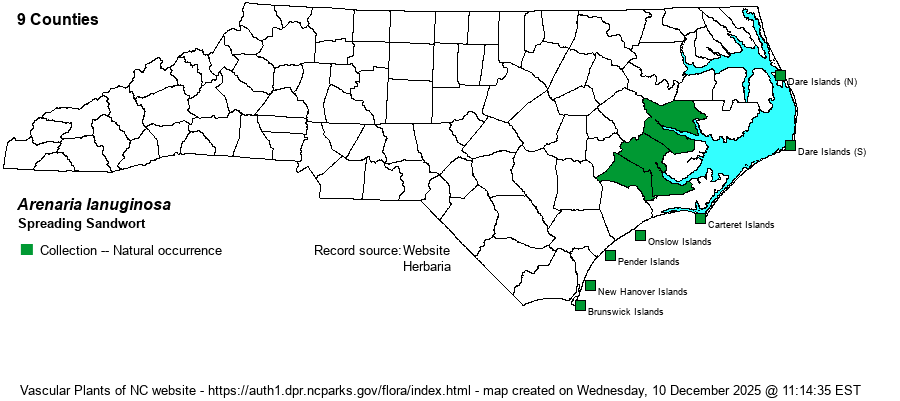| Author | (Michaux) Rohrbach | |
| Distribution | Essentially a coastal species, ranging inland to a few areas with exposures of marl/coquina rock (Beaufort, Craven, and Jones counties).
This is a mostly Coastal Plain species, ranging from southeastern VA south to southern FL and west to CA. It does range inland sparingly to TN. | |
| Abundance | Rare and clearly declining, and now limited to about 4-5 currently known sites, based on the NCNHP database. It occurs in areas prone to coastal development, if not other impacts such as sea level rise. This is a Significantly Rare species, and though there are numerous collections and up to about 14 locations in the NCNHP database, the State Rank of S1 is completely justified. | |
| Habitat | This species grows over marl or other calcareous soils, such as on marl outcrops, shell middens, dunes, and maritime forests. | |
| Phenology | Blooms from May to July, and fruits shortly after flowering. | |
| Identification | This is a decumbent herb, growing to about 2 feet long. It has opposite leaves, many along the stem; each is linear to narrowly oblanceolate, entire, about 1-inch long and barely 1/5-inch wide; a few axillary leaves may be present. The numerous flowers are axillary, one per axil, on long pedicels to about 1-inch long. A flower has short green sepals to only about 1/5-inch long, but the petals are usually absent, or if present, 5 very small and white ones. Identify this plant by its sprawling, decumbent habit, the numerous pairs of very narrow leaves, and flowers on long stalks. | |
| Taxonomic Comments | It is the nominate variety -- var. lanuginosa -- that is present in the state, according to Weakley (2018).
| |
| Other Common Name(s) | Woolly Chickweed | |
| State Rank | S1 | |
| Global Rank | G5 | |
| State Status | [SR-P] | |
| US Status | | |
| USACE-agcp | FAC link |
| USACE-emp | FAC link |

